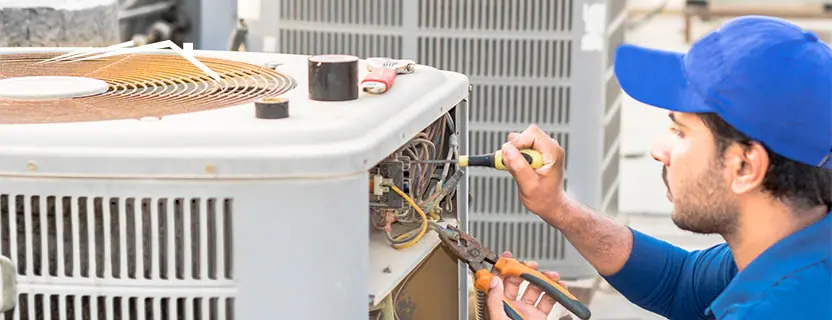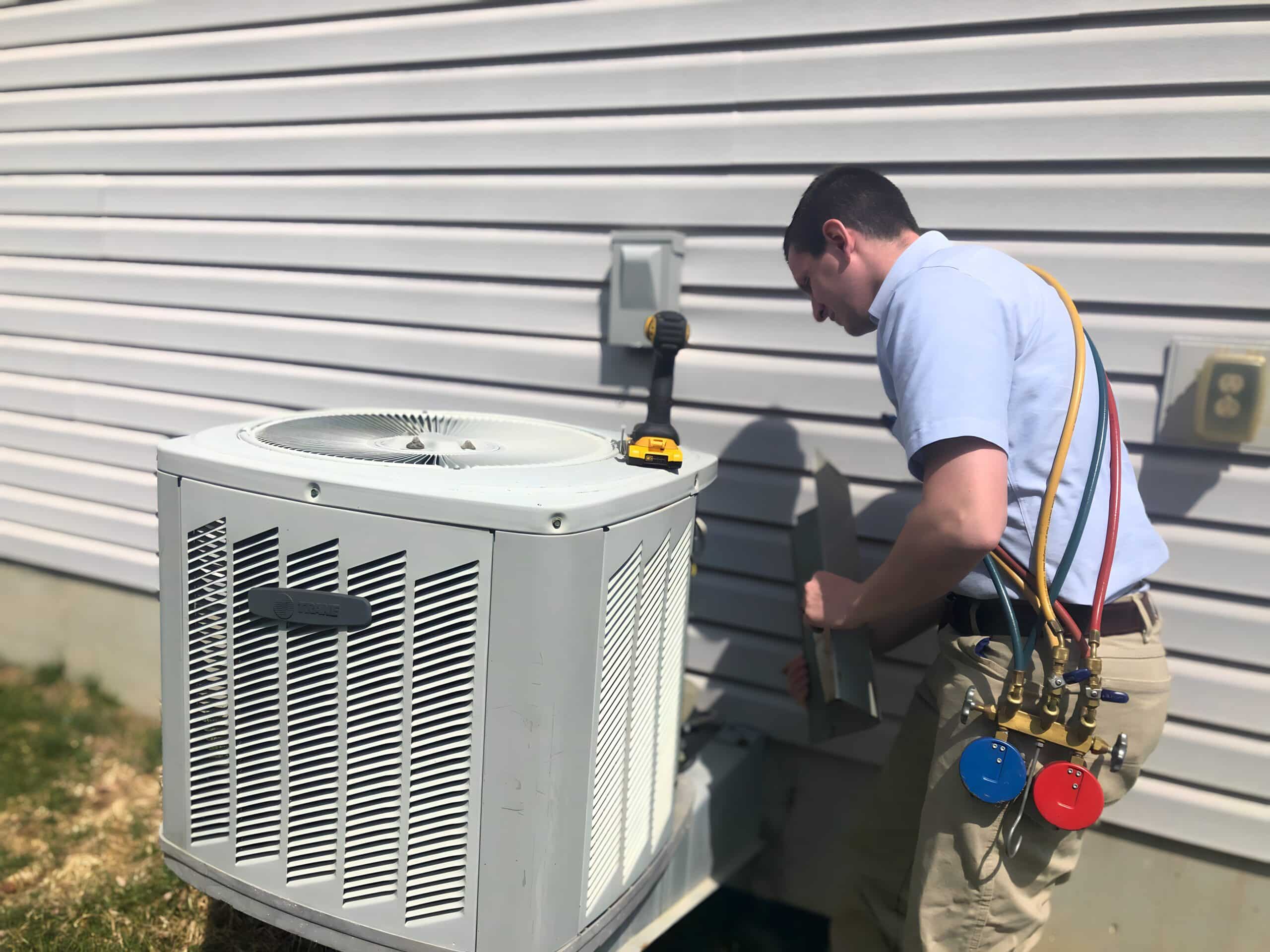Just How a Warmth Pump and Heater Interact to Optimize Your Home's Heating Efficiency
Recognizing exactly how a heatpump and heating system interact is crucial for homeowners seeking reliable heating remedies. Each system has its staminas, giving a balanced technique to home comfort. The heatpump masters moderate temperatures, while the furnace delivers fast heat throughout extreme cold. This harmony not just minimizes power expenses but additionally enhances the life-span of both home appliances. What variables influence this cooperation, and how can house owners optimize their advantages?
Understanding Heat Pumps: How They Function
Although lots of people might be not familiar with their inner functions, heatpump play a necessary role in modern heater. These tools operate by moving warmth from one location to one more, making use of the concepts of thermodynamics. In colder months, a heat pump removes warm from the outside air, ground, or water, and transfers it inside to warm up the space. On the other hand, during warmer months, it can reverse the process, functioning as an ac system by eliminating heat from inside to the outside.Heat pumps contain an evaporator, condenser, development, and compressor valve. The cooling agent within the system takes in warmth as it vaporizes at low temperatures and stress. The compressor after that raises the pressure and temperature level of the cooling agent, allowing it to launch warm as it condenses. This efficient procedure can substantially reduce energy consumption contrasted to typical home heating techniques, making heatpump a sustainable selection for climate control in homes.
The Role of Heating Systems in Home Heating
Heaters play a necessary function in home heating by providing a trustworthy resource of warmth throughout the colder months. They run by generating warmth through burning or electric resistance, distributing it throughout the home using ducts or glowing systems. The efficiency of a heating system is commonly gauged by its Yearly Fuel Usage Efficiency (AFUE) score, which shows exactly how effectively the system transforms fuel into heat.Furnaces can use various energy sources, consisting of gas, propane, oil, or electrical energy, enabling homeowners to select the most suitable option for their demands. Unlike heatpump, which may battle in severe cool, furnaces preserve consistent efficiency, making certain that indoor temperatures stay comfortable regardless of outdoor problems. Furthermore, modern heating systems typically come equipped with innovative innovation, such as clever thermostats and variable-speed blowers, boosting their performance and responsiveness. This adaptability makes furnaces an important element in all-encompassing home heating approaches.

Advantages of Utilizing Both Solutions Together
Combining the strengths of both furnaces and warmth pumps can cause a more effective and effective home heating solution. Using both systems enables homeowners to make use of the heatpump's energy performance throughout milder temperatures while depending on the furnace for even more extreme cold conditions. This twin strategy can considerably lower power prices, as heat pumps consume much less electricity than typical heating methods when temperatures are moderate.Additionally, utilizing both systems with each other can enhance comfort degrees in the home. Warm pumps can give constant, even heating, while furnaces can swiftly raise ambient temperature levels when required. The integration of both systems can prolong the life expectancy of devices by reducing wear and tear on each device, as they share the workload. Eventually, home owners can appreciate a well balanced, economical heating remedy that readjusts seamlessly to differing weather, making sure a warm and inviting home throughout the wintertime months.
How Warm Pumps and Furnaces Enhance Each Other
They develop a corresponding heating system that optimizes performance and convenience when property owners incorporate warmth pumps and furnaces. Heatpump run by moving warmth from the outdoors air or ground, making them very reliable in modest climates. They excel during milder temperatures, providing cost-effective home heating. Alternatively, furnaces produce warmth with burning or electric resistance, supplying strong, immediate heat during extreme cold conditions.The combination of these two systems enables dynamic changes based on temperature variations. During warmer months or milder winter months days, the heatpump can take the lead, conserving power and reducing expenses. As temperatures decrease, the furnace can perfectly engage, making certain consistent heat throughout the home. This synergy not only maximizes power use but also enhances the life expectancy of both systems, as each unit operates within its perfect performance range. Together, they produce a balanced atmosphere that adapts to differing climate needs.
Enhancing Efficiency: Tips for Homeowners
Homeowners can boost their heating performance with several sensible approaches. Establishing a routine maintenance schedule, integrating smart thermostat innovation, and applying effective insulation and sealing services are key steps. These actions not only improve convenience but additionally minimize energy costs.
Normal Upkeep Arrange
To ensure maximum home heating effectiveness, establishing a normal upkeep timetable is crucial for any kind of home. Home owners should focus on routine assessments of both heat pumps and heaters to determine peak performance. This includes changing air filters each to 3 months, as clogged filters can considerably decrease effectiveness. Additionally, scheduling expert maintenance a minimum of when a year permits service technicians to determine and address prospective concerns prior to they intensify. Home owners ought to additionally clean the heat pump's exterior device to avoid debris accumulation that can prevent air flow. By sticking to a normal upkeep timetable, home owners not just boost their home heating systems' performance yet additionally prolong their lifespan, leading to greater convenience and decreased energy expenses throughout the chillier months.
Smart Thermostat Assimilation
Incorporating a smart thermostat into a home furnace can significantly improve energy effectiveness, especially as it enables exact control over temperature settings. These gadgets can discover the homeowner's routine and preferences, instantly changing the temperature level to enhance comfort while reducing power usage. For example, they can lower home heating throughout times when the home is vacant, minimizing unneeded usage. Lots of wise thermostats additionally give real-time power usage data, making it possible for house owners to make educated decisions about their heating habits. In addition, remote gain access to by means of smart device apps enables individuals to readjust settings from anywhere, ensuring the home is cozy upon return. On the whole, wise thermostat assimilation not only boosts comfort yet substantially contributes to energy financial savings and effectiveness.
Insulation and Securing Solutions
Smart thermostats play a vital function in power performance, but their effectiveness can be substantially enhanced by appropriate insulation and sealing services. Home owners should prioritize shielding attics, wall surfaces, and floors to decrease warm loss. High-quality insulation products, such as spray foam or fiberglass, can significantly boost thermal resistance. Additionally, sealing voids around windows, air ducts, and doors prevents cool air seepage and warm getaway. Weatherstripping and caulking work methods for dealing with these leakages - heat pump replacement ooltewah tn. Regular inspections for air leakages, together with using blower door tests, can aid recognize trouble locations. By spending in insulation and sealing, property owners can enhance the efficiency of their heater, inevitably leading to minimized energy intake and lower utility bills
Typical Myths Concerning Heat Pumps and Furnaces
What false impressions surround heat pumps and heaters? Several people wrongly believe click here for info that warmth pumps are inadequate in chillier climates. In truth, contemporary heatpump are designed to run effectively even in reduced temperatures, providing reputable heating throughout winter. Another common misconception is that heaters are constantly more efficient than warmth pumps. This depends on the particular energy sources and performance rankings of the units in concern. Some might likewise assume that utilizing both systems all at once is unnecessary, yet in reality, this combination can maximize home heating effectiveness, specifically throughout extreme weather. In addition, individuals typically assume that heatpump call for continuous maintenance, when actually, they have similar maintenance requires to standard heater. By disproving these misconceptions, property owners can make even more educated choices concerning their heating alternatives, inevitably resulting in improved convenience and power performance in their homes.
Upkeep Considerations for Combined Solutions

Regularly Asked Inquiries
Can Warm Pumps Work Successfully in Incredibly Cold Climates?
Warm pumps can have a hard time in incredibly cold environments because of lowered effectiveness and heat removal limitations. Nonetheless, improvements in modern technology have actually led to designs designed for better efficiency in such problems, enhancing their feasibility in rough atmospheres.
Exactly How Lengthy Do Heat Pumps and Furnaces Generally Last?
Heatpump typically last 15 to 20 years, while heating systems have a life expectancy of 15 to three decades. Normal upkeep can prolong their durability, making sure effective procedure and minimizing the requirement for premature replacements.

What Is the Typical Price of Installing Both Solutions?
The typical price of mounting both a warmth pump and a heating system usually ranges between $5,000 to $10,000 - heat pump installation ooltewah tn. Factors influencing this price include system size, setup intricacy, and local labor prices
Are There Tax Incentives for Utilizing Energy-Efficient Heating Systems?
Numerous homeowners inquire regarding tax motivations for energy-efficient heating unit. Different government and state programs often provide credits or discounts, urging the adoption of lasting modern technologies to decrease power consumption and promote environmental duty.
Exactly how Do I Select the Right Dimension Heatpump and Heating System?
Choosing the right dimension heatpump and heater involves computing the home's square footage, thinking about insulation quality, and examining regional environment. Consulting a specialist can assure optimal system efficiency and energy effectiveness based on specific demands. ductless mini splits. Understanding learn the facts here now exactly how a heat pump and heater job together is important for homeowners seeking efficient home heating solutions. In colder months, a warmth pump extracts heat from the outdoors air, ground, or water, and transfers Read Full Article it indoors to warm up the living room. When home owners integrate warm pumps and furnaces, they produce a corresponding heating system that maximizes performance and convenience. Warm pumps run by transferring warm from the outside air or ground, making them very reliable in modest environments. Warmth pumps can have a hard time in very chilly climates due to lowered efficiency and warm extraction constraints